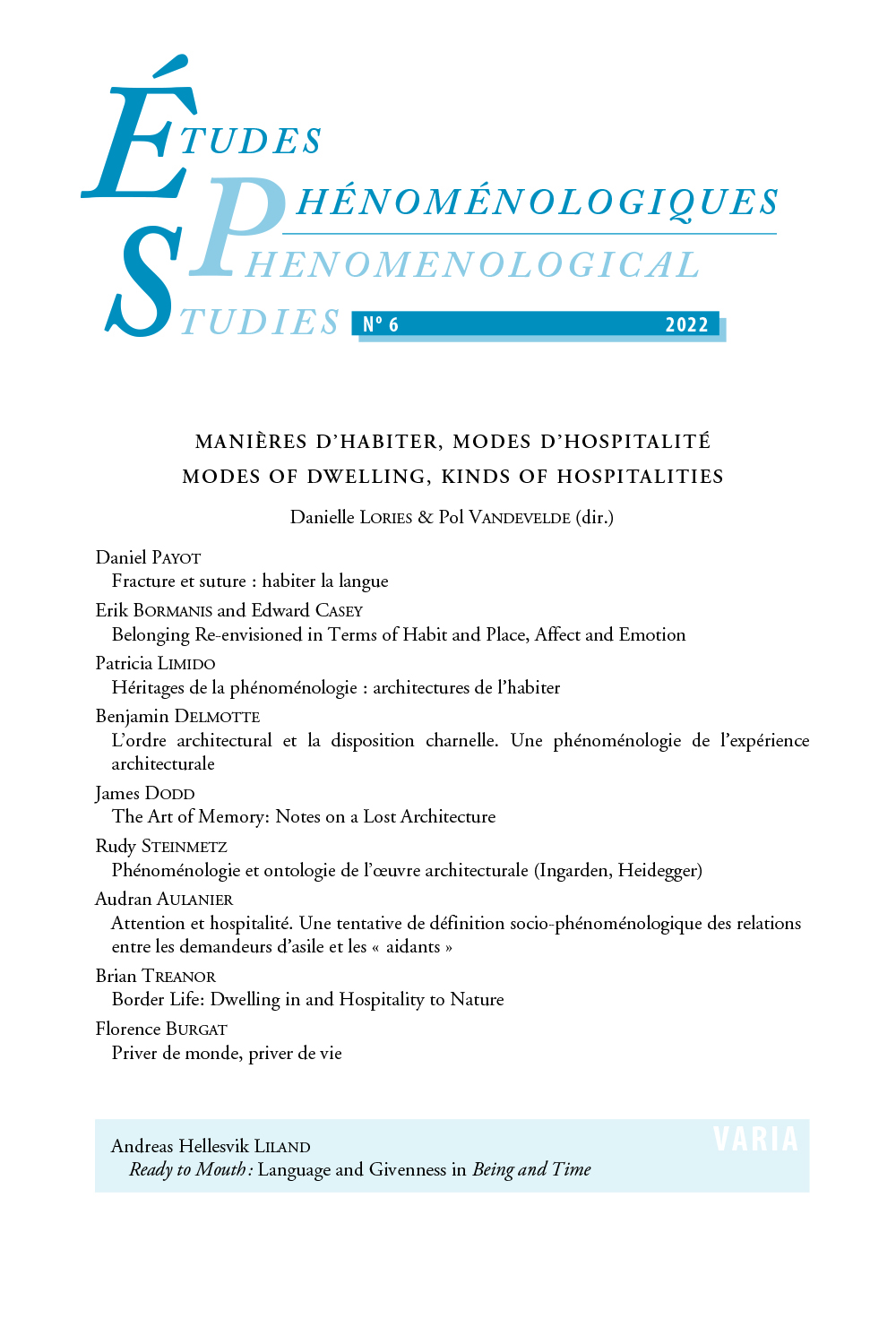 previous article in this issue previous article in this issue | next article in this issue  |

Preview first page |
Document Details : Title: Les deux voies de l'hébétude Subtitle: Vie animale, vie quotidienne chez Heidegger Author(s): BÉGOUT, Bruce Journal: Etudes phénoménologiques - Phenomenological Studies Volume: 2 Date: 2018 Pages: 77-109 DOI: 10.2143/EPH.2.0.3254114 Abstract : The goal of this article is to explain the meaning of life in Heidegger’s first philosophy between 1919 and 1929. It is more specifically a comparison between the way Heidegger describes animal life, on the one hand, and human everyday life, on the other. The thesis defended is that there is a fuzzy and porous boundary between animal life and human life before Being and Time, whereas after 1927 the opposition between the two forms of life becomes clearly manifest. The topic of human everyday life would then be in a certain sense the trace left by the repression of animality in Heidegger’s works after 1927. Thus, despite Heidegger’s intent to differentiate strictly animal and human life, everydayness would be the concealed and indirect expression of the lost community between human beings and animals, a community that was acknowledged before 1927 and rejected afterward. |
|


